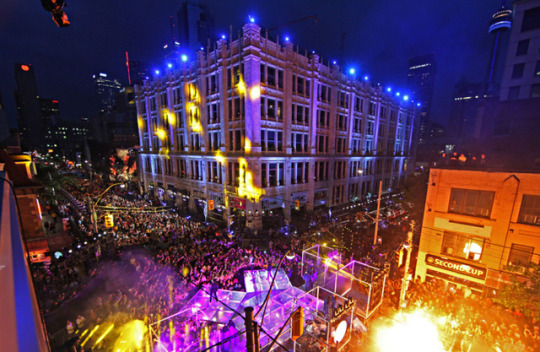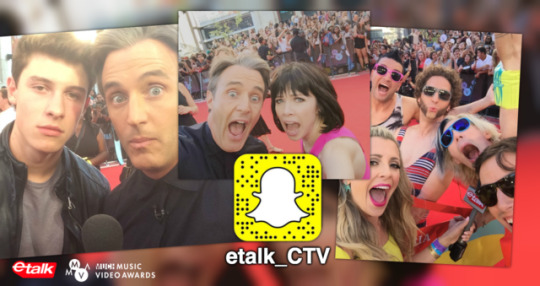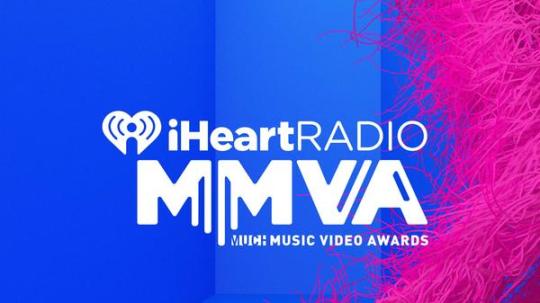Text
Online Presence and Interaction
With the MMVA’s being such a fan integrated event, there is a lot of discussion about the show and awards before the show even begins. Concepts such as convergence which “allows the media content to be displayed on any number of different devices (Sullivan p. 216, 2013) open up a platform for events like the MMVA’s to obtain optimum success in other ways than just in person attendance by celebrities and fans. A sense of audience autonomy is established which lets audience members incorporate whatever forms of media they choose in order to enhance their overall experience (Sullivan p. 217, 2013). For the case of the MMVA’s, the majority of its demographic is teenagers and adolescents, an age range that relies and heavily incorporates social media and new technologies into their viewing practices. Having this demographic allows for a much higher online presence to be generated around all aspects of the event, whether it is promotional, celebrity look outs, inside scoop, etc. A good way to compare the influence of audience social media presence is by looking at the MMVA’s in comparison to an award show like the Screen Actors Guild Awards. Many of the audience members of the MMVA’s share and contribute their own user-generated content, opinions and experience about the award show on their social platforms; thus creating an online presence and discussion about an event that is happening live. These online posts generate interest between those who may not be watching and if these individual’s timelines are full of posts about the MMVA’s, they may be more inclined to watch if they share those similar interests and fandoms, which they most likely do depending on the people they follow. However, in the case of the Screen Actors Guild Awards, the demographic for these awards is a much more mature age group and those who are a part of the critical film and television subculture. In today’s day and age, there is no way to separate social media presence away from these entertainment events, however, the older age group watching the SAG Awards is far less likely to post live about the show or establish as strong of an online fan presence as the MMVA’s are able to generate. This free labour that the fans of the MMVA’s put towards the event allows the heads of the network to obtain free positive publicity for the most part without promising or paying anyone anything. Due to this unspoken partnership between the executives and the audience that allows them to work together to establish a positive experience behind an event like the MMVA’s proves supports the statement that “the audience becomes an integral part of the media production apparatus itself” (Sullivan p. 232, 2013); the two are unable to separate from one another and can exist positively and successfully only when combined with the other.
Works Cited:
Sullivan, J. (2013). Media Audiences: Effects, users, institutions and power. Sage Publications Inc., New York, NY.
0 notes
Text
Viewing Experience and Conditions
As previously mentioned, the MMVA’s give their audience a wide variety of options on how they choose to view the event, whether its live in person, watching live-to-air on television, or streaming/watching the award show online. Although no matter which way the audience member chooses to observe the show, they are watching the exact same event but, the way that they do end up deciding to act as an audience can greatly affect their audience experience. By having all these options how to view the MMVA’s, their audience does not feel restricted with having to conform to the events schedule, however, the way they interpret their audience experience and the event can be indirectly manipulated by their audience platform. There has been plenty of studies on personal audience experience and how their viewing options can manipulate the way that they enjoy their time as spectators; a lot of this research is used to study the difference in audience pleasure when watching sporting events in person or through a screen such as the article, “The Influences of Sports Viewing Conditions on Enjoyment from Watching Televised Sports: An Analysis of the FIFA World Cup Audiences in Theater vs. Home”. (Kim, Cheong, Kim 2016) Although this article focuses on solely sports viewing practices, a lot of the points that are made that discuss factors of audience satisfaction can be translated into any audience setting. If we were to modify the comparison between theatre vs. home viewing for sports that is made in the article in order to connect to the MMVA’s, the comparison would then be made between the at-home vs. in person audiences. There is a lengthy list of factors that could affect an audience members personal experience at a show like the MMVA’s and each individuals physical position, opinions, and experience are just some of the things that can change the way they interpret the event taking place. There is also no way of really determining if one way of viewing is definitively better than the other because these are all based on personal experience, however, there are certain factors and elements that may be better or worse depending on the way the viewer acts as part of the audience. In the article mentioned above, the authors list off just a few of the elements that affect viewer enjoyment such as, “ the screen size, image quality, and audio quality of the theatre viewing condition are all different, and presumably superior, to those in the house- hold television viewing condition; also, social factors, such as a cheering atmosphere, clearly distinguish the theatre and home viewing conditions.” (Kim, Cheong, Kim p.390, 2016) In the case of this audience study, these same elements can also play a part in the enjoyment level of the different audiences of the 2017 MMVA’s. Things such as the quality of the screen one is watching the show on, or their position in the crowd at the live taping, etc. can all alter the individuals personal experience. The MMVA’s takes the claim of theatre vs. home viewing one step further by comparing home vs. live taping viewing. Although off instinct most people would probably choose to be there live rather than watch it on a screen because it is a more unique experience, the quality of their audience experience would become dependent on a lot of factors that they cannot control. For instance, if one chooses to watch the award show through a screen, they get to choose when they watch, who is around them, where they watch, along a long list of other modifiable factors; the main sacrifice being that they are not able to experience the event in person so their experience is less unique and less interactive. On the other hand, if one was to be a part of the live audience, they get to engage in that truly interactive experience with their favourite celebrities and be a part of the cheering atmosphere of the show. Unfortunately if that is the case, there is a big chance that their actual viewing experience may be altered because of where they are positioned in the crowd, what stage their close to, and they are forced to follow the time and schedule of the award show because it is meant to air live. By having multiple options of viewing the MMVA’s, the award show itself not only is helping its audiences depending on whatever their viewing preferences are, but they also benefit from he options because it brings more publicity and higher ratings and attendance to the show. Instead of their audience only being concentrated in one exact space, their audience location and viewing ranges, which in the end increases the profit that the network will make off the event. Therefore, the network does not have much area in which they can lose profit or popularity when it comes down to viewing experience because if an audience is not happy with a certain viewing option one year, there are other alternatives already set up and available for them to select from free of charge regardless of if they prefer at home viewing or live audience viewing.
Works Cited:
Kim, K., Cheong, Y., & Kim, H. (2016). The influences of sports viewing conditions on enjoyment from watching televised sports: An analysis of the FIFA World Cup audiences in theater vs. home. Journal of Broadcasting & Electronic Media, 60(3), 389–409.
0 notes
Video
youtube
Celebrity Keke Palmer interacting with her fans at the MMVA’s and discussing with the red carpet host how important her fans are to her
0 notes
Text
Fandom and Fans
As all award shows do, the MMVA’s provides fans with an opportunity to watch, applaud, and praise the artists and celebrities that they idolize and enjoy and thank them with nominations and awards. At this particular award show, the awards are split into two main categories, those being data generated results and fan voted results. With the fan voted categories, there is an even more personal connection established between the fans and celebrities than if they were just watching the show in the audience. For the fan chosen winners, the awards are meant to be so much more sentimental and important because it creates a competition between different celebrities and their supportive fans, in a way that proves whose fans are the most dedicated to that celebrity and their art. Situations such as ones like this establish a space where fandom can really flourish and be encouraged and shared. The term fandom is one that is commonly used throughout the course and the discussion of audiences as a whole. If you are looking at audiences through a very general lens, then the members of whatever audience being analyzed are most likely to be a fan of what/who they are watching and participating in. In the textbook for this course, the term ‘fandom’ is defined by Sandvoss as “the regular, emotionally involved consumption of a given popular narrative or text in the form of books, television shows, films, or music, as well as popular texts in a broader sense such as sports teams and popular icons and stars ranging from athletes and musicians to actors.” (Sullivan p.194, 2013) After reading this definition, it seems to go hand in hand with the whole idea behind the audience role at awards shows; to show a emotional response to the content they have consumed and enjoyed. Although the MMVA’s do not award and celebrate all of the listed above types of fandoms that exist, it definitely allows for a fandom environment to be experienced for those who are fans of music and some popular icons and musicians.
It is important to have these spaces where fandoms can exist in the real world, as well as online because the studying and observing of these fandoms “has offered a way of exploring the activity and participation of audiences.” (Booth p.153, 2014) This exploration being discussed becomes crucial when looking at the financial benefit and exploitation that these fan communities provide for the entertainment/media industry. By being able to track the popularity of certain brands, media, people, etc., media researchers are able to gather data and continuously produce content with greater chances at success and less guess work. Fandoms and the individual fans that help establish them, are indirectly guiding and assisting the work and content produced by the same people they are fans of. What I mean by this is that if a fandom is not reacting well to a certain idea or theme that the artist is trying to produce, their media researchers are able to track the interests and feelings of the fans and make decisions accordingly. These fandoms are indirectly working for the celebrities by not just supporting them and their art, but by also commenting on it publicly and sharing their thoughts and feelings about it with other people within and outside of the fandom subculture. That is why events like the MMVA’s that are free for fans to attend and participate in hold some what of a dual purpose. Of course the award show is a space to celebrate talent and award those who are deserving, and a place for fans to be surrounded by music and celebrities they love. However, it also acts as a place where all these different fandoms can congregate and be observed by media researchers who track their interests and response to things like the artists attire, performances, arrival, interaction, etc.
Works Cited:
Booth, P. (2105). Crowdfunding: A spimatic application of digital fandom. New Media and Society, 17(2), 149-166.
Sullivan, J. (2013). Media Audiences: Effects, users, institutions and power. Sage Publications Inc., New York, NY.
0 notes
Photo

Photo of some of the live audience that gathered for the MMVA’s 2017. Teens and adolescents filled the streets of Toronto to catch a glimpse of some of their favourite artists and performers.
0 notes
Photo

Ad for the 2017 MMVA’s showing celebrity hosts: Joe Jonas and Alessia Cara
0 notes
Text
What are the MMVA’s?
For the third and final blog post, the focus will be on one of the most common and observed audience experiences that anyone can watch; an award show, specifically Canada’s most popular music award show the Much Music Video Awards. This award show takes place annually right in the centre of downtown Toronto in the parking lots of the CTV and Much Music Networks on 299 Queen Street West. The MMVA’s is a highly anticipated event for Canadian teens and Much Music viewers because it gives them an opportunity to actively participate and engage with some of the biggest music stars out there. The show is free to attend and vote, with seating being conducted on a strictly first come first serve basis. This inviting atmosphere encourages its younger audience to make the trip down to Queen Street West and create a live audience, while it also offers the options of being a spectator through online streaming and live-to-air viewing on Much Music’s television network. The show is usually hosted by some big celebrity names and co-hosted by the networks hosts, and this year was no exception. The celebrities advertised to host this year were Canadian born and raised musician, Alessia Cara and Joe Jonas from the Jonas Brothers who have attended and performed at the show multiple times in the past. As any Hollywood award show has, the MMVA’s consists of the red carpet and pre-show, the actual show with performances and awards, and the after-party and after-show, all of which the fans and spectators are free to attend and encouraged to participate in. The MMVA’s gives Canada the spotlight of hosting some of the biggest celebrities in music for a night of awards, fan interactions, and celebration; something that Canadian teens/viewers can usually only experience through a screen or social media feed. The night not only provides a great opportunity for Canadian fans, but also shines a lot of exposure onto some of Canada’s biggest upcoming artists and talents. Since the awards are not only targeted at Canadian artists, the night draws in some of the biggest names in the industry and allows for fans to show their support in person, but also introduces the giant audience to some new, home-grown names and talent that Canada has to offer in the music industry.
0 notes
Text
Blog #3 Starting Point: 2017 MMVA
November 26, 2017
0 notes
Video
youtube
Contemplation of videos and posts from and about the couple leading up to their wedding event
0 notes
Text
Interactivity
Unlike most audience experiences which involve being physically present where the event is taking place, “The Mane Event” was a much more interactive experience. Unless you were a member of the elite celebrities and family and friends who actually got invited to attend the real wedding, other audience members found themselves experiencing the event through a screen, in a much more private space. Since I was a part of the majority that does not know the couple personally, I followed along through things like Instagram and Twitter to get all my updates before the episode went live. The ability to air an event like a wedding on television, and post about it on social media allowed for a mass audience to be established. People from all over the world, different backgrounds, financial standings, etc, joined together in the public sphere to establish a mass audience (Sullivan 2013). Due to the fact that a lot of modern audiences rely heavily on media and interactivity through it to establish their masses, a greater number of individuals are able to participate. This concepts connects to the uses and incorporation of social media in constructing an audience and their involvement. The most successful audience experiences are ones that its members can actively participate in because those events establish a connection between event and audience that sometimes is hard to achieve without this idea of interactivity. Luckily, social media bridges that gap so smoothly; an accessible communication form for a wide majority of people around the world that establishes a tie between one end to the next. For the audience of “The Mane Event”, social media was used in multiple different ways, it was used to publish and spread media propaganda (Sullivan 2013) like the advertisements included in this blog to generate a rolling and desire to tune into the special, and also as a screening platform. Although the special was meant to air on television, many live-streamed the ceremony through social media platforms like Instagram and other streaming networks so that it was more accessible for anyone who wanted to be a part of the special night. The virtual wedding guests had open platforms to express their support, love, and opinions on all things about the wedding before, during, and after the ceremony. As assumed, the ratings for this long awaited TV special were spectacular and probably would have done well if the audience was not as interactive. However, by allowing audience members to have the ability to chime in and share their opinions and connection to the celebrity couple and other celebrities in attendance, the event was much more personal and interactive. This high level of interactivity made the idea of attending a wedding through a television screen not as foreign, and it blurred the line between a wedding guest and just a television consumer. This wedding special achieved the goal that all events aim to achieve, it connected so tightly with its audience members that everyone felt welcomed and as if they had a crucial, part in the event taking place. It was no longer just two celebrities getting married on live television, it was a wedding shared with everyone and anyone who cared about it; it provided the same feeling as if you were to attend the wedding of someone very close to you in your real personal life.
Source:
Sullivan, J. (2013). Media Audiences: Effects, users, institutions and power. Sage Publications Inc., New York, NY.
0 notes
Text
Establishing A Connection: Identification
A major reason behind the success, and even the possibility of this TV special being a reality comes from the fans of these two celebrities, or int he context of this paper, their audience. Any celebrity, or person for that matter, that has people following or watching them has their own audience, and in the case of this episode their audience took on multiple roles as fans and wedding guests. While studying audiences throughout the course, a major concept that has come has to do with how and why people become members of an audience, and what factors draw them to follow or participate in the actions of the audience. The main component to an audience is that all members of said audience are bound by a similar interest or key factor that everything is related back to. These things can range from anything such as an event or holiday, to a specific individual or media form. For this post, the thing that established this audience was anyone who is a fan of Gucci Mane and/or Keyshia Ka’oir. Due to the fact that this audience is generated basically off of celebrity endorsement, it can be connected and analyzed through few of the four processes of audience involvement discussed in the course. In the article by William Brown titled, “Examining Four Processes of Audience Involvement with Media Personae: Transportation, Parasocial Interaction, Identification, and Worship”, Brown points out and describes the four modes listed in the article title and explains how audiences relate and connect themselves to the event through those very things. Similarly to the ideas brought up for the concept of persona, identification is a key component in the making of this audience. The fans who tuned in to watch the spectacle identify with the couple on some type of level. Brown’s article explains that fans, audience members and “media consumers search for personae with whom they want to identify and when they find them, they adopt the attitudes, values, beliefs and behaviour of these personae that are already similar to their own or that they are already predisposed to adopt.” (Brown 264) A key part of that statement is “whom they want to identify…” (Brown 264), connecting back to the focus of this blog series, many of the audience members live and come from a extremely opposite lifestyle than Gucci Mane and his fiancé, but because they desire to identify with them to be a part of this event, they search for anything that they can connect themselves too. The idea of identification establishes a much closer relationship between the source and the audience; a sense of reliability. As a member of the audience watching “The Mane Event” air live on television, I checked back and fourth between the ceremony and the overflowing posts on social media while the event was streaming. Even if I did not personally relate to the event in the strongest way, it is undeniable that thousands of people did. Some people identified to the couple and ceremony so strongly that they made it an actual function in their personal lives, booking the day off, hosting their own parties, and sharing it all on social media. Audience members were able to transport themselves to the actual event, although they were operated by thousands of miles and a television screen.
Source:
Brown, W. (2015). Examining four processes of audience involvement with media personae: Transportation, parasocial interaction, identification, and worship. Communication Theory, 25, 259-283.
0 notes



